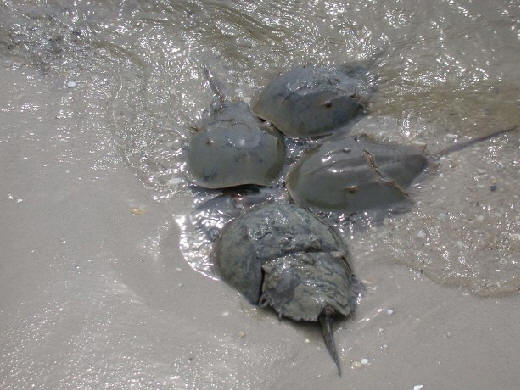

The horseshoe crab is more closely related to spiders and scorpions than it is to true crabs and crustaceans. Sometimes called 'living fossils' these interesting arthropods were thought to have evolved over 350 million years ago. They are extremely important for other animals that live along the Florida coastline because their eggs are a major food source for juvenile sea turtles, migrating shorebirds, and many species of fish. These harmless arthropods are often seen in great numbers on certain beaches during spring high tides that correspond to the full and new moon. The eggs are buried in the sand and hatch during the next lunar high tide when the young crabs swim out to deeper water. Presently, their numbers are declining due to their harvest for use as bait in eel and conch fisheries. Additionally, the pharmaceutical industry uses them for a substance in their blood that is used in the production of sensitive medical diagnostic testing kits. Conservation efforts including legislation limiting harvest, have recently been enacted. (Photo by Gretchen Ehlinger)
Horseshoe crab Limulus polyphemus L. (Family: Limulidae)
Habitat: Along beaches and lagoons
Food: Small invertebrates, clams and mussels
Florida range: Along both eastern and western coasts
Occurrence: Often seen on the beach at high tide during the new and full moon in the spring
Link for more information: http://www.horseshoecrab.org/